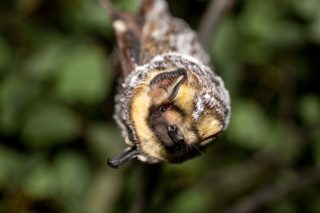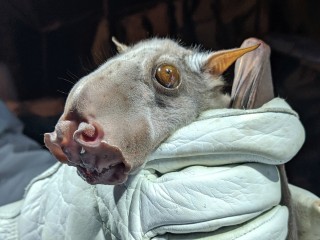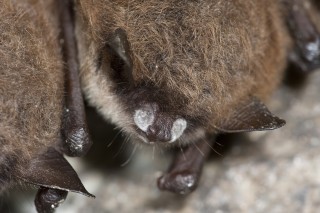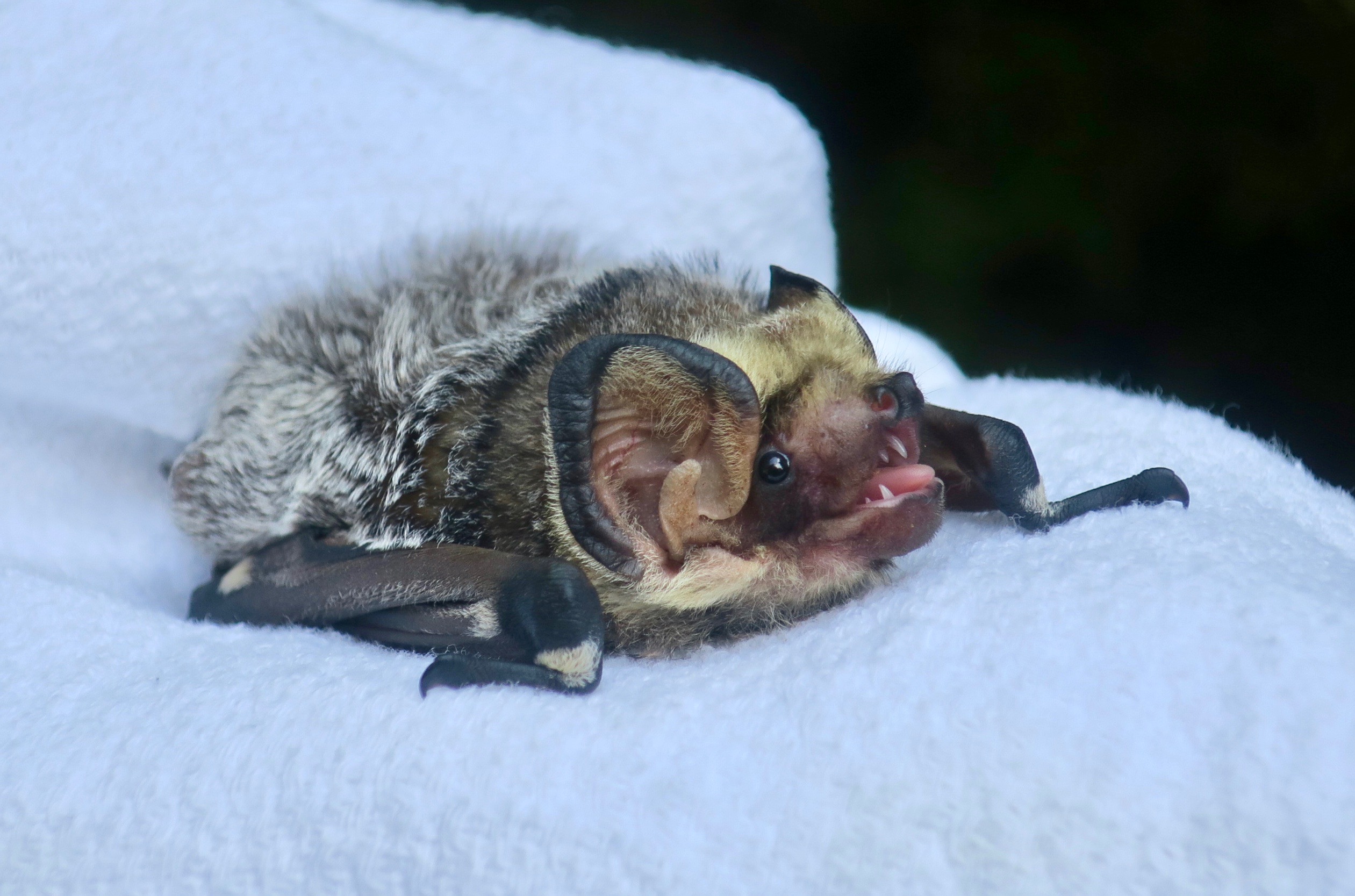
March 11, 2024
Beneficent Bat, Part 1
- as seen by -
 Bryan Kao
Bryan Kao
With frosted tips across its dark chocolate fur, the distinctively colored hoary bat (Lasiurus cinereus) looks a bit like a powdered donut.
The hoary bat is part of the vesper bat family with little eyes, big ears, and a well-developed tail. In summer, this bat can be found roosting solitarily on tree branches, camouflaged as a dry leaf with its furry backside folded around like a sleeping bag. Like a migratory bird, the hoary bat flies south for the winter, but some overwinter in New York City.
Hard to see in the wild, Fordham University and the Wildlife Conservation Society parks have used acoustic monitoring to discover that hoary bats pass through the Bronx Zoo, Central Park Zoo, Queens Zoo, and Prospect Park Zoo.
Unlike other small mammals, bats are long-lived, with some North American records showing lifespans of 40 years. Most bats only have a single pup per year, though hoary bats can sometimes have up to four. Bats are efficient pest control, eating crop and forest damaging insects and mosquitos at night. However, they face numerous threats these days including habitat loss, disease, and other human activities like wind turbines used to generate electricity. When this species migrates, many bats are being killed by collisions at wind turbines – the blades move too quickly for bats to avoid.
EDITOR’S NOTE: Learn about bat-friendly wind energy practices in Beneficent Bat, Part 2.
Canon PowerShot G9X




Leave a Comment